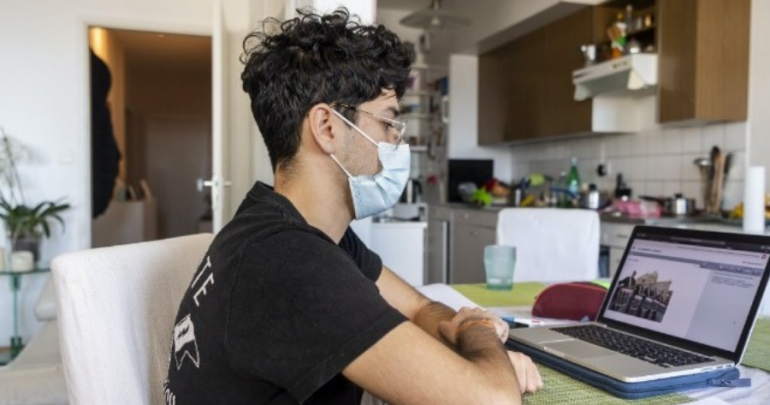The debate over whether or not to open schools continues intensely and is fueled by the emergence of different strains of the new coronavirus, the effect of which on children we do not yet know well. The World Health Organization, for its part, continues to recommend that every effort be made to avoid mass closures of schools.
The following are the main conclusions of the World Health Organization from a chapter of its weekly epidemiological report that was published today and is dedicated to the lessons learned from a year of pandemic education.
- When should schools close?
"School closures should be a last resort, they should be temporary and imposed only locally in areas of strong transmission" of the virus, the WHO says, together with UNESCO or UNICEF, regarding the impact on students, in particular to the less privileged or to the most vulnerable.
In addition, "many studies have shown that the reopening of schools has not led to significant increases in transmission to the community nor to peak infections."
"Evidence of the usefulness of closing schools to reduce transmission within the community is unclear," he said. age to measure if and how the effect of these new mutant strains on children could be different from that of the original strain of the new coronavirus.
"If we find that children are more vulnerable, public health measures may need to be adapted," the WHO recommends.
- Are schools sources of infection?
"Schools are not proving to be outbreaks, except in some cases where protection measures are not well implemented," he said.
According to the same source, the transmission rate in the community is reflected in the school. "When transmission in the community is weak and appropriate prevention measures are taken, it is unlikely that children and schools will be at the forefront of transmission," the agency said.
But the opposite is true when infections increase, "as has been the case for the last three months, so prevention and protection measures are crucial to prevent transmission."
Schools should also be actively involved in early detection and transmission restraint measures (tests, contact tracking and quarantine), which are part of the UN's arsenal of efforts to contain the pandemic.
The WHO notes that of all Covid cases recorded in 2020, under-18s account for 8% of cases and 29% of the world's population, that children under 10 "are less likely to be infected and transmitted by "what older children do." He cites a Norwegian study showing a "very low" child-to-child and child-to-adult transmission rate in schools that welcome children aged 5 to 13 and take appropriate health measures.
Adolescents aged 16-18 transmit the virus as often as adults, according to the WHO.
- What are the risks for teachers?
The WHO is based on a study conducted in the United Kingdom and shows that "school staff are at lower risk at school when compared to the adult population in general".
Another study conducted in the United States among 57.000 kindergarten workers "shows that there is no increased risk of infection for workers."
- What measures are needed to tame infections?
To protect themselves, the WHO asks schools to ensure that there is good ventilation and hygiene practices (hand washing, cleaning surfaces).
WHO recommends the use of a mask: children 12 years of age and older "should wear a mask, just like adults" while teachers and school staff "should wear a mask when they can not ensure that they are at least 1 meter away in areas with high transmission rates ".
Physical distances must be ensured, for example by limiting the number of students in each class, avoiding mixing classes or even applying different schedules.
More mandatory measures may be necessary for older students and especially for adolescents.
